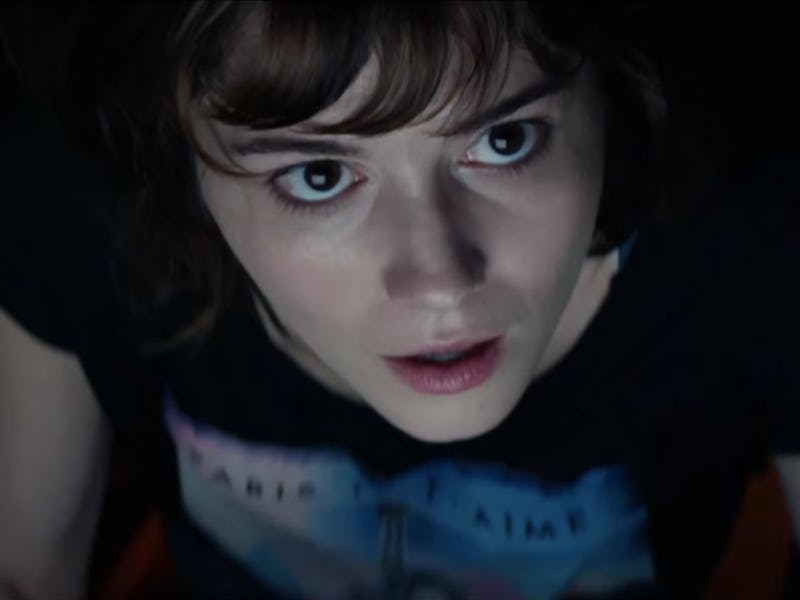How '10 Cloverfield Lane' Began as a Totally Different Movie
From spec script to mysterious sequel, '10 Cloverfield Lane' is rewriting the rules on how to make franchises.

This post may contain spoilers?
As far as we know there is no monster in the upcoming movie 10 Cloverfield Lane. There may be some internal monsters being hashed out among the movie’s three main characters, but there most likely won’t be the same gigantic multi-legged kaiju beast that trampled New York eight years ago in the first Cloverfield movie. It’s by design, and it’s surprising, especially because 10 Cloverfield Lane is, for all appearances, a semi-sequel to the original that shares its name. What’s a Cloverfield movie without a monster to shake things up? It turns out that 10 Cloverfield Lane began life as a completely different thing, ultimately retrofitted by producer J.J. Abrams and his collaborators to fit into their nascent but ambitious Cloverfield universe.
Originally titled The Cellar, 10 Cloverfield Lane started as an unsolicited spec script sent to Abrams’ influential production company Bad Robot by original screenwriters Josh Campbell and Matt Stuecken.
Spec scripts in Hollywood are nothing new, but following the brain-twisting successes of something like Abrams’ TV series Lost and the original Cloverfield movie, it makes sense that people would want to just send bizarre sci-fi tinged scripts to Bad Robot in hopes they’d get made. For Stuecken and Campbell, the long shot paid off.
In its earliest incarnation, The Cellar had nothing to do with Cloverfield, and like the trailers for the finished movie it seems to be about a girl named Michelle who wakes up trapped in a doomsday bomb shelter built by a man named Howard who says some kind of apocalyptic event has forced himself, Michelle, and another man to take refuge there. An outline for The Cellar can be found at SpecScout, a script library that promotes “the highest-quality screenplays, both on and off the market” for movie buyers. It breaks down almost the entire story in its original incarnation.
The “farmhouse” and the “crawlspace” seen in the finished trailers for 10 Cloverfield Lane are mentioned, but so are potential spoilers about what could be outside in the movie. The “Where” of The Cellar is described as a “100 percent rural town near Milwaukee, Wisconsin,” and besides the bunker it also calls for “an abandoned rural highway and gas station,” and “a burning Chicago city skyline” to round out the spoilerific settings.
It even describes similar movies to help potential buyers characterize the kind of aesthetics and genre the script was trying to convey. It lists “The Crazies, Quarantine, The Happening, Saw, Right at Your Door, Dawn of the Dead, Cabin Fever, and The Cube” as comparable movies.
It makes sense that such a movie would attract Abrams, whose avowed obsession with clever Twilight Zone-esque stories runs deep. He mentioned as much when Entertainment Weekly asked him about the genesis of the project:
“This script came in and had an incredibly strong central conceit. It was a very powerful Twilight Zone idea. We began developing the story, and we came upon some things where it became clear to us, that we were in a very interesting place, because the story was wholly original, a very different situation, different characters from anything we’ve done. But the spirit of it, the genre of it, the heart of it, the fear factor, the comedy factor, the weirdness factor — there were so many elements that felt like the DNA of this story were of the same place that Cloverfield was born out of.”
While the specific connection that made Abrams think The Cellar jelled with Cloverfield is still a little hazy — obviously we’ll have to watch the movie to find out — we do know that Bad Robot bought the script in 2012 and brought in screenwriter Damien Chazelle a year later to do rewrites on Stuecken and Campbell’s script, most likely to massage the story into the still mysterious Cloverfield mythology. At the time, Chazelle was actually primed to direct the movie, which was being developed under the codename “Valencia” — at various stages the original movie was codenamed Slusho!, Cheese, and Chocolate Outrage — as a follow up to his 2009 debut Guy and Madeline on a Park Bench. But Chazelle dropped out once another non-Bad Robot script he wrote called Whiplash got funding.
While Chazelle left to go direct what would eventually be nominated for Best Picture and more, Bad Robot brought in another relative newcomer for the mysterious former spec script: Dan Trachtenberg.
When not doing commercial work, Trachtenberg had been a minor internet celebrity as a co-host of the popular pop culture video-podcast called The Totally Rad Show for five years before making waves in 2011 with a viral short film adapted from the videogame Portal. It shot his name to the top of the list for various geek-friendly projects, like an adaptation of the comic book Y: The Last Man, before he got the Cloverfield gig in 2014.
Until 10 Cloverfield Lane is released, it remains to be seen how a totally unrelated story was brought into the Cloverfield fold. Abrams obviously thought The Cellar shared enough DNA to pass for a Cloverfield movie, and wants to hitch it to a nebulous mythology of weird, pan-genre storytelling. But it’s most obviously indicative of how Hollywood is always trying to attach original ideas to well established brands simply for an extra boost of name recognition. It’s all about the franchises.